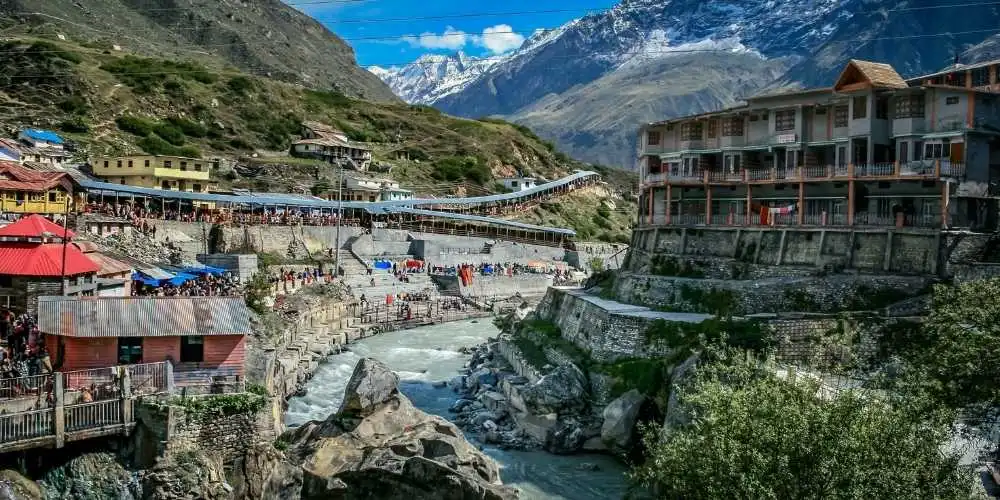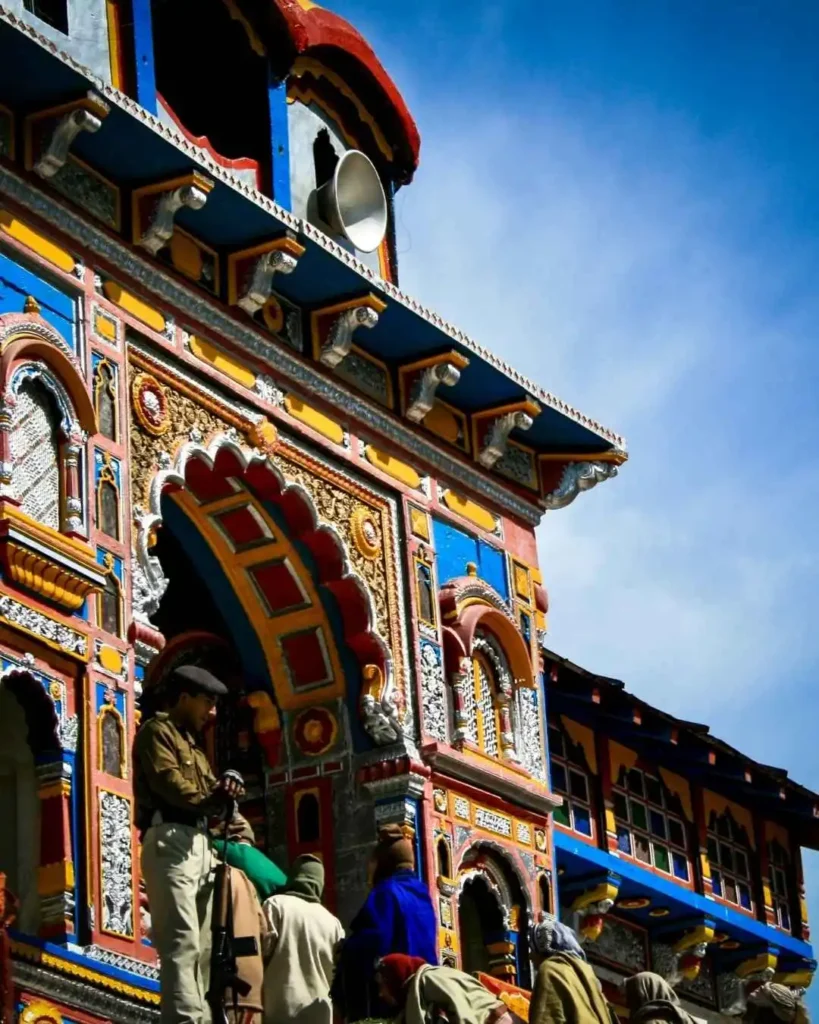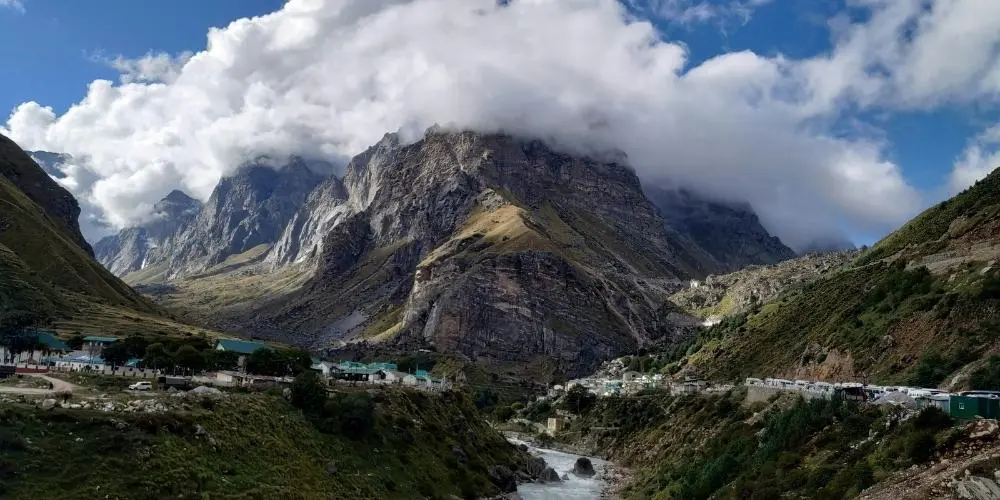If there’s any place in the Himalayas where divinity meets wild natural beauty, it’s Badrinath. Revered as one of India’s “Char Dham” pilgrimage sites, this sacred town is more than just a temple destination; it’s a soulful journey through ancient legends, serene rivers, and landscapes painted by the nature gods themselves. Whether you’re a devoted pilgrim, a wanderer seeking peace, or someone who loves the adventure of the unknown, Badrinath wraps you in its limitless embrace.
How to Reach Badrinath
The most popular route for travellers is from Haridwar, Uttarakhand’s spiritual hub. The Haridwar to Badrinath distance is about 316-320 kilometres, winding through Rishikesh, Devprayag, Rudraprayag, Karnaprayag, Joshimath, and Govindghat before touching Badrinath. The journey takes 10-12 hours by car or bus; roads carve through dramatic Himalayan valleys, with the Alaknanda River as your near-constant companion. Shared jeeps, taxis, and state-run buses are available, but booking in advance is wise, especially in peak months.
If you are travelling from a far off city, the nearest airport is the Jolly Grant Airport (Dehradun), about 315 kms away from Badrinath. For people travelling by train, the nearest railway station is Rishikesh, which is about 295 kms away. From either point, the rest of the trip continues by road.

What is the Best Time to Visit Badrinath for the Yatra and What Are the Permits Required for Badrinath?
The gateway to Badrinath opens in late April or early May and closes around Diwali (mid-November). The best time to visit Badrinath is May to June and September to October. These months see the best weather; daytime highs of 10-18°C, clear roads, and lush green valleys. Monsoon (July-August) is beautiful but risky due to landslides; winters (December-April) see the temple and roads closed due to heavy snow.
Pro Tip: Book everything early; Badrinath is open just six months a year!
Latest Permit and Registration Requirements for Char Dham Yatra (Mandatory for All): Every pilgrim, Indian or foreign; must complete online or offline registration for the Char Dham Yatra (which includes Badrinath) in 2025.
How to Register:
- Visit the Uttarakhand government portal https://registrationandtouristcare.uk.gov.in
- Provide your trip details, upload identification documents, and get a Yatra e-pass with a QR code.
- Registration is also available offline at counters along the route (Rishikesh, Haridwar, Joshimath, and others).
Note: Without registration, entry to temple precincts and major routes is NOT allowed. Carry physical/digital copies of your registration and ID at all times to ensure a smooth Yatra experience.
The Best Properties in Badrinath for a Comfortable Stay
- Sarovar Portico: Modern comfort only ~600 metres from the temple; polished rooms, heating, buffet vegetarian meals, and reliable staff.
- Hotel Snow Crest: Just 1 km from the temple, cozy with hearty vegetarian food, and helpful for elderly pilgrims.
- Hotel Narayan Palace: Suites, classic amenities, just a short stroll away from the main shrine.
- GMVN Tourist Rest House Devlok: An official government rest house; basic but neat, right in the heart of town.
- Vijaylords Palace and Hotel Pinnacle Peaks: Spacious, clean, with friendly staff, easy walking distance to the temple.
For those who want a more local touch, Mana Village (4 km away) has small homestays, which are perfect if you’re headed for treks or want peaceful Himalayan mornings.
Badrinath Temple: Divine Calm at 10,200 Feet
Badrinath Temple’s vibrant facade, set against snow-capped peaks, is iconic. Its black stone deity; a meditative Vishnu; draws lakhs of devotees who queue up from dawn until dusk. Before darshan, everyone bathes in the adjacent Tapt Kund; a natural hot spring believed to heal. Don’t miss evening “aarti” when lamps and chants echo against the surrounding mountains.

Nearby, visit Narad Kund, where Adi Shankara is believed to have found the idol, and Brahma Kapal, a sacred spot for ritual offerings to ancestors.
Mana Village: The First Village of India
Just 3-4 kms ahead of Badrinath, Mana Village is the last Indian outpost before the Tibetan border. Dotted with stone cottages, yak herders stroll by in this town, and mountain breezes carry stories from the Mahabharata. Mana is serene and less crowded; perfect for meditative walks and quiet reflection.
No special permit or Inner Line Permit (ILP) is required for Indian citizens to visit Mana Village or for the trek to Vasudhara Falls. However, foreign nationals must carry their passports. What not to miss here:
- Vyas Gufa and Ganesh Gufa: Mythical caves where Ved Vyas is said to have composed the Mahabharata, with Ganesh as his scribe.
- Bheem Pul: A natural stone bridge over the Saraswati river, believed to be tossed here by Bheem for Draupadi.
- Last Tea Shop of India: Sip tea with views across the valley and into another world.
- Local souvenirs: Woolens, potato snacks, and simple Bhotiya crafts can be bought from here; interact with villagers who are happy to share stories.
Note: Beyond Mana Village, if you wish to trek or drive to Mana Pass (a restricted India-China border zone), an Inner Line Permit (ILP) is compulsory for both Indian and foreign travellers. ILP is issued by the SDM office in Joshimath and requires NOC from ITBP and Army, valid ID, vehicle details, and a processing time of several days. The visit requires meticulous planning.

Vasudhara Falls: Trek to Nature’s Sacred Shower
From Mana Village, adventure seekers can trek 6 kms further to reach Vasudhara Falls, one of the most spectacular hidden gems of Uttarakhand. The trail is moderate, winding through rocky tracks, pine clumps, and wildflowers, opening up to a soaring, 120-meter waterfall that plunges into the valley; a legendary spot said to touch only the pure-hearted! The entire trek from Badrinath via Mana and then to Vasudhara spans about 9 kms total, so wear sturdy shoes, pack water and energy snacks, and leave before noon to return before dark.
Other Places to Visit and Local Attractions
- Charanpaduka: Boulder with Vishnu’s imprinted footprints, a short, scenic trek.
- Joshimath: Gateway to Auli & onward treks, home to Shankaracharya Math.
- Alaknanda River Walks: Relax before/after your yatra with peaceful riverside strolls.
What to Pack and Carry
- Warm jackets, fleece layers (even summer is chilly), raincoat, gloves, thermal socks, and good walking shoes.
- Personal medicines, altitude sickness remedies, energy bars, sunscreen, and chapstick.
- ID cards, extra cash, torch, and a basic first aid kit (mobile signal is patchy).
- Light day backpack for treks.
- Poncho/umbrella and a sturdy water bottle.
Lesser-Known Advice for Devotees and Explorers
- Acclimatize for a day in Joshimath or Govindghat if you’re prone to mountain sickness.
- Dress respectfully, especially around temples and in Mana.
- Move at your pace; breathe deep, rest often.
- Early mornings are magical, whether for darshan, photography, or simple soulful walks.
- Shared jeeps and local taxis are the backbone for moving around Badrinath, Mana, and nearby treks.
- Start journeys early; roads may close or get blocked by landslides, especially after noon.
- Book rooms, transport, and guides in advance; last-minute options are rare.
Final Thoughts
Badrinath isn’t just a tick on the pilgrimage map; it’s a soul-stirring experience where every vista tells a story, every breeze carries prayers, and every step is blessed by nature and faith. Take the long road, listen to the river, explore the last Indian village, and let Vasudhara’s mists refresh your spirit. Here, mountains don’t just stand; they watch over you.
By: Anushka Singhal
